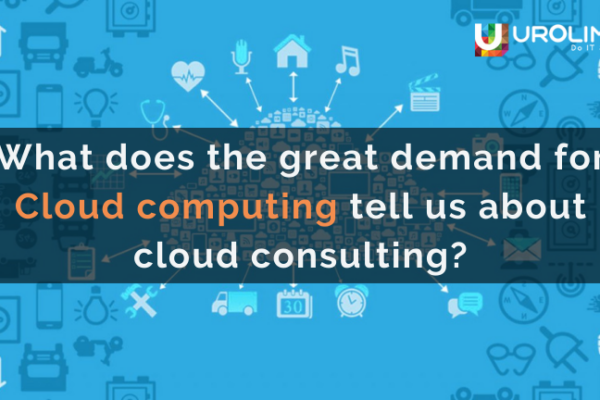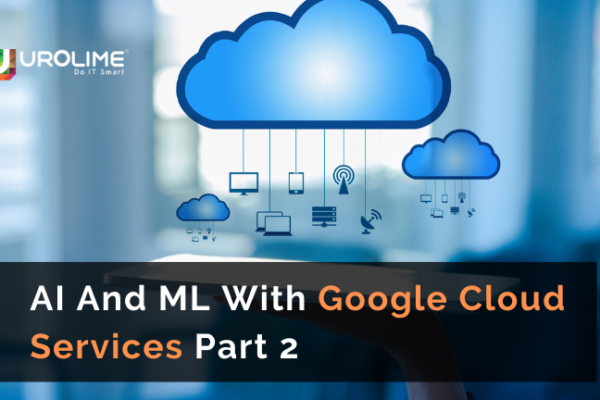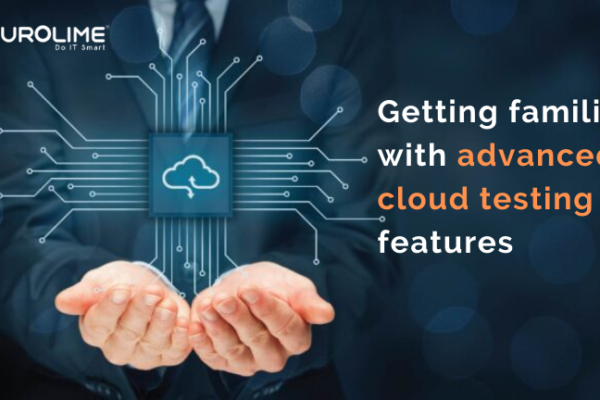Platform-as-a-service (PaaS) is a form of cloud computing where hardware and a platform for the application are provided by a second-party. A PaaS platform allows the developers and programmers to develop, run, and manage their applications without building and maintaining the infrastructure or platform usually correlated with the process.In this way the app manager can focus more on more important tasks like code and relationships with the app customers etc A PaaS provider hosts the hardware and software on its own infrastructure. It delivers this platform to the user as an integrated solution, or service through cloud. PaaS doesn’t typically replace the company’s entire IT infrastructure. Instead, most of the businesses rely on PaaS providers for some key services such as app hosting, development, etc.
PaaS is a great option to consider when you have the capability to write the code and make the idea behind it to reality, but doesn’t want to get into the hassle of maintaining the equipment for it in your facility. The further maintenance and upkeep of the hardware and software will be done by the PaaS providers. It is easier for the developer to scale and migrate the whole application since it exists in the cloud. In IT, most of the critical decisions are justified according to efficiency, business innovation and risk reduction. Here’s how PaaS solutions remain truthful to these decisions.
IT efficiency: PaaS speeds provisioning, increases automation, standardizes deployments, eliminates routine tasks, and improves scalability.
Business innovation: PaaS drives end-to-end results by supporting IT to be more responsive to business opportunities, for example, mobile applications, support for more innovative user experiences (chatbots), more trusted transactions (blockchain), faster release cycles (containers and APIs), and data discovery (analytics).
Risk reduction: PaaS encourages and simplifies security and speeds responses to evolving threats across heterogeneous IT components. It increases business resiliency and reduces downtime while preventing data loss and speeding recovery.
What to look for while selecting a PaaS provider?
- Features included
When the application grows, no: of users will increase and hence the functionalities should also increase. Before opting for a PaaS provider, you have to make sure that you can scale easily and have all the options required.
- Multiple programming languages
Make sure your development languages and frameworks have complete compatibility with the chosen provider. The quality of the PaaS providers is determined based on the number of programming languages they support.
- Database management
Make sure the PaaS providers are giving you comprehensive management on a constant basis. Some providers might put limitations for monitoring, security and management services and you wouldn’t realise this until you come up with your first road block.
- Storage space
Growth can spike at any time. Don’t limit the store capabilities by considering the development stages or current conversions. Consider providers with autoscaling capability for storage for applications so that any change in the storage doesn’t limit your conversions.
- Control over the resources
Some PaaS providers put a lot of limitations over application freedoms and integrations. This restricts the freedom of the users to do what they want. As the development cycle progresses, this can end up being a bigger hassle for the developers and designers.
- Reliability and support
One of the most important facts to consider any service provider is “will they be around when you need them the most?”. Double-check with their customer retaining capability and service history before signing in with them.
- Certified provider
Don’t overlook this requirement over the technical ones. PCI DSS is one cloud regulation, though don’t forget about Sarbanes-Oxley (SOX). Certain regulatory demands could get ignored if your provider isn’t accurate in staying compliant. The fine you may have to bear for such regulatory violations will be much more than the entire upkeep cost.
The most common problem in finding a PaaS provider is that there is a sea of contenders to choose from and their competition is intense. The technology demand is too high so the quality services may cost you a hell lot when compared. By choosing traditional development efforts you may have to spend more than what you expect. Getting your servers, data services, resource allocation, and monitoring can end up draining all your capital amount before you even begin.
Choosing an efficient provider who understands all your needs and requirements can be a tricky task. Before planning to opt for your cloud service provider, make a checklist of all the necessities you require pre-app launch, and post app launch. Look for quality and reliability. Forecast the consequences of each move you make so that you can avoid ending blocked in between your development cycle. Service availability or resilience is one of the major concerns raised by businesses relying on PaaS. Don’t follow the pattern when you’re handing over the access to a second party provider because service outage and infrastructure disruption is not at all tolerable in any stage of the app existence. Considering the PaaS provider’s growth road map beforehand will help to avoid issues and risks caused by internal changes. For instance, if the provider ceases supporting a specific programming language or opts to use a diverse set of tools, the influence on users can be challenging and disruptive.
Leading PaaS vendors
Here we are listing some of the trustworthy PaaS provider in the industry at the moment.
AWS Elastic Beanstalk
AWS Elastic Beanstalk is certainly one of the top PaaS providers ever existed. AWS makes the complete process easy for the user by managing deployment, provisioning, load-balancing, and auto-scaling. The multilanguage capability of AWS is amazing so that the user just has to upload the code which is written in any language; Java, .Net, PHP, Ruby, Node.js, and Python are just some examples.
Oracle CLoud Platform
Oracle cloud platform is a one-stop shop to manage your entire application. OCP provides a robust platform with greater self-repairing capabilities which is built with machine learning and artificial intelligence.
Google App Engine
The Google PaaS ie Google app engine supports most languages such as Java, Python, PHP, Ruby, Node.js, .Net, etc. It offers top-notch security solutions including firewall capabilities, ‘Identity and Access Management (IAM), and fully-managed SSL/TLS certificates.
Microsoft Azure
Along with all the high-end features offered by Microsoft Azure, they also provide a pay as you go option for making the decision-making process easier.
Salesforce APaaS
Salesforce aPaaS offers infrastructure, servers, storage, networking, security, middleware, OS, runtime environments, development tools, databases, and an ability to easily integrate 3rd party APIs.
Redhat Openshift PaaS
Red Hat OpenShift PaaS encompasses the security and reliability features from Red Hat Enterprise Linux. This cloud platform promises open and extensible architecture so, with them, the scaling, efficiency, and security is a piece of cake.
SAP Cloud Platform
SAP Cloud Platform is an open PaaS. It offers all standard PaaS features and microservices. This helps in building mobile-enabled cloud applications.
![]()






